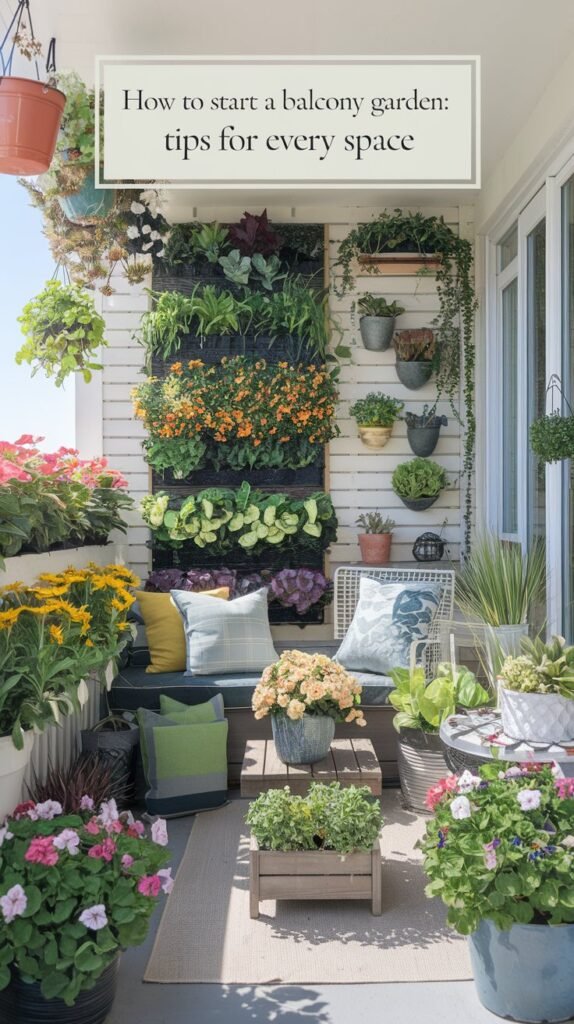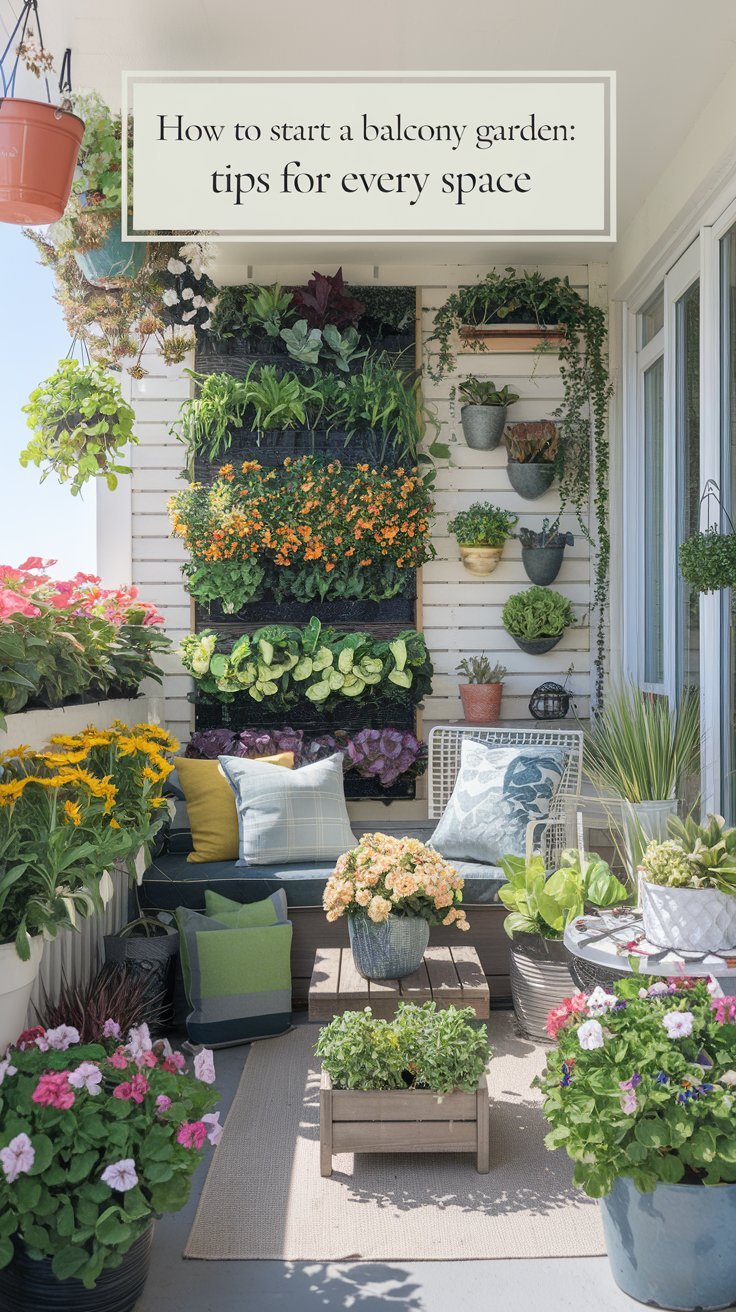Learn how to start a balcony garden with this beginner-friendly guide! Discover tips on choosing plants, containers, and creating a lush, green oasis in your small space. 🌿✨

I’ll never forget the first time I decided to turn my tiny, empty balcony into a garden. It was a sunny Saturday morning, and I thought, “Why not?” I started with a few pots of herbs and flowers, and before I knew it, my balcony had transformed into a lush, green retreat. If you’re thinking about starting your own balcony garden, you’re in the right place. Whether you’re a seasoned gardener or a complete beginner, I’m here to guide you through the process. Let’s create your very own green oasis!
Why Start a Balcony Garden?
- Maximize Small Spaces: Even the tiniest balcony can become a thriving garden.
- Fresh Herbs and Veggies: Grow your own food right outside your door.
- Mental Health Boost: Gardening is a great way to reduce stress and connect with nature.
- Aesthetic Appeal: Turn your balcony into a beautiful, inviting space.
Step-by-Step Guide to Starting a Balcony Garden
1. Assess Your Space
- Sunlight: Determine how much sunlight your balcony gets. Full sun (6+ hours), partial sun (3-6 hours), or shade (less than 3 hours) will dictate what plants you can grow.
- Space: Measure your balcony to understand how much room you have for plants, furniture, and walking space.
- Weight Limit: Check your balcony’s weight capacity, especially if you plan to use large pots or furniture.
2. Choose the Right Plants
- For Sunny Balconies: Herbs (basil, rosemary), vegetables (tomatoes, peppers), and flowers (petunias, geraniums).
- For Shady Balconies: Ferns, begonias, impatiens, and leafy greens (lettuce, spinach).
- For Windy Balconies: Sturdy plants like ornamental grasses, succulents, or dwarf shrubs.
3. Select Containers
- Material: Choose lightweight containers like plastic, fiberglass, or fabric pots. Avoid heavy materials like ceramic if weight is a concern.
- Size: Ensure pots are large enough for your plants’ root systems. Herbs can grow in small pots, while tomatoes need larger containers.
- Drainage: Make sure your pots have drainage holes to prevent waterlogging.
4. Prepare the Soil
- Soil Type: Use high-quality potting mix designed for containers. Avoid garden soil, as it can be too dense and may contain pests.
- Fertilizer: Add slow-release fertilizer or compost to nourish your plants.
5. Plant Your Garden
- Arrange Plants: Place taller plants at the back and shorter ones in front for a layered look.
- Planting Depth: Follow the instructions on the plant tags for proper planting depth.
- Watering: Water thoroughly after planting and ensure the soil stays moist but not soggy.
6. Add Vertical Elements
- Trellises: Perfect for climbing plants like beans, peas, or ivy.
- Hanging Baskets: Great for trailing plants like petunias or strawberries.
- Wall Planters: Use vertical space to grow herbs or succulents.
7. Maintain Your Garden
- Watering: Check soil moisture daily, especially in hot weather. Use a watering can or drip irrigation system.
- Pruning: Trim dead leaves and spent flowers to encourage new growth.
- Fertilizing: Feed your plants every 2-4 weeks with a balanced liquid fertilizer.
- Pest Control: Inspect plants regularly for pests and treat them with organic solutions like neem oil.
Tips for a Thriving Balcony Garden
- Start Small: Begin with a few easy-to-grow plants and expand as you gain confidence.
- Use Mulch: Add a layer of mulch to retain moisture and regulate soil temperature.
- Rotate Plants: Move pots around to ensure all plants get adequate sunlight.
- Protect from Wind: Use windbreaks like screens or taller plants to shield delicate plants.
FAQs About Balcony Gardens
Q: Can I grow vegetables on a balcony?
A: Absolutely! Tomatoes, peppers, lettuce, and herbs are great options for balcony gardens.
Q: How do I protect my plants from extreme weather?
A: Use shade cloths for sun protection and bring pots indoors during storms or frost.
Q: What if my balcony doesn’t get much sunlight?
A: Choose shade-tolerant plants like ferns, begonias, or leafy greens.
Q: How often should I water my balcony garden?
A: Check the soil daily—water when the top inch feels dry. In hot weather, you may need to water twice a day.
Final Thoughts
Starting a balcony garden has been one of the most rewarding projects I’ve ever taken on. It’s amazing how a few pots of plants can transform a dull space into a vibrant, green retreat. Whether you’re growing herbs, flowers, or veggies, the key is to start small, be patient, and enjoy the process. Before you know it, you’ll have a thriving garden right outside your door.
For more gardening tips and inspiration, follow me, Ashley Scott, on Instagram or visit my blog at AshleyScottGardens.com. Happy gardening! 🌿✨

